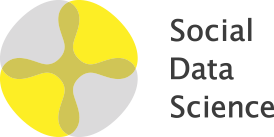FACULTY

KEISUKE TAKANO
Graduate School of Social Data Science/Assistant Professor
Field of Study
Geographic Information Science
INTERVIEW
Unique Appeal of the Social Data Science Program
SDS has a remarkable advantage in that the students can gain expertise in both data analysis and information science, as well as a broad understanding of the social sciences, including economics and business administration. In recent years, we have entered an era in which even advanced and complex statistical analyses can be easily conducted using widely available and often free statistical software. However, without academic or practical knowledge of the subject matter being analyzed, it is difficult to assess the validity of the obtained results and derive useful academic or practical insights. In this sense, the SDS program's emphasis on cultivating individuals capable of interpreting data based on background knowledge of socio-economic contexts is a significant strength. Another distinctive feature is its focus on practical implementation in society. In particular, the "Project-Based Learning (PBL) Seminar" course allows students to engage with people from various companies and policy-making fields, providing an opportunity to learn how the knowledge and techniques acquired in lectures and exercises are applied in real-world practice.
Innovative education and research encouraged in the Social Data Science Program
What I consider most important in education is the concept of "Shu-Ha-Ri" (守破離). Data science is evolving rapidly, and the number of statistical and machine learning models available continues to increase. On the other hand, unless we consistently practice the fundamentals—such as clarifying the research question, identifying the added value of your analysis based on existing academic and practical knowledge, selecting the most appropriate method for achieving the goal, conducting the analysis, and clearly and concisely communicating the results—the value of the analysis will be significantly diminished, no matter how advanced the methods or how valuable the data used. Driven by this motivation, my lectures focus not only on developing a solid foundation in statistical analysis but also on cultivating the fundamental mindset and practical skills essential for engaging in academic research. In addition, I work on various economic analyses grounded in geographic information science, aiming to produce academic research outcomes while also feeding the knowledge gained back into educational practice.
CLASS
- (U)Data Analysis for Property Market
- (U)Multivariate Analysis
- (G)Advanced Statistical Analysis (practice)
RESEARCH
Research Website
My research field is Geographic Information Science (GIS). GIS is a domain that analyzes and interprets various phenomena occurring in geographic space by utilizing data and mathematical models. Within this field, my focus is particularly on understanding the mechanisms behind the agglomeration of economic activities—such as population and industries—and the flow of these activities across locations. For instance, I have conducted empirical analyses on the spatial distribution of firms and inter-firm transactions. More recently, I have begun a research project regarding student commuting behavior within the city. In recent years, spatial data has attracted attention as part of the growing trend of utilizing alternative data in economic analysis. However, handling spatial data requires specialized knowledge and techniques that differ from those used with conventional tabular data. Therefore, I also work on methods to facilitate the smooth analysis of spatial data. Statistical analysis that accounts for the tendency that near things are more related than distant things, known as the first law of geography, can offer highly valuable insights. They help elucidate the underlying mechanisms behind the data and improve the accuracy of various predictions related to economic activities. Specifically, I engage in research that addresses a wide range of questions about the spatial distribution of economic activity, employing approaches such as spatial statistics and spatial interaction models like gravity models.
Keywords
- GIS (Geographic Information Science)
- urban and spatial economics
- microeconometric analysis


